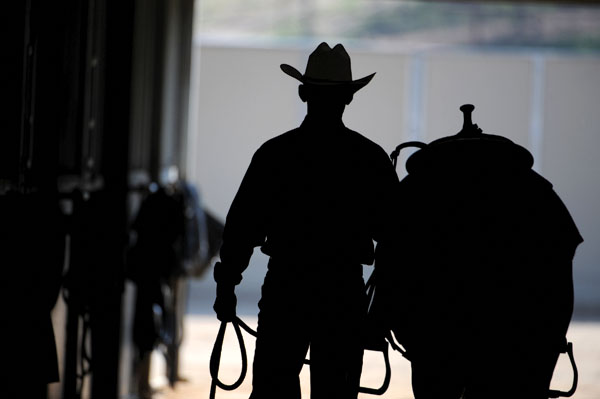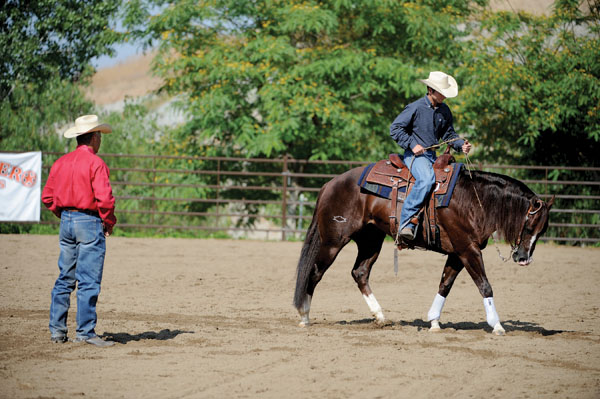You’ve probably heard it said about a horse or rider that he or she “just needs more mileage.” It equates to needing more practice and experience, whether it’s toward a show-pen goal or any other form of training and riding.

When it comes to gaining experience with horses, there’s no such thing as “free miles.” You have to work for what you get, and you don’t get more than you put in.
However, there is such a thing as getting off-track or missing the right road in the first place. In either of those cases, it’s also quite possible that you’ll put on bad miles instead of good ones and set your progress back. Your horse could suffer, too. By practicing them, horses learn poor habits as quickly as they learn good ones, maybe faster. Once you dig yourself down into a bad-habit hole with your training, you have to dig back out before you can go forward.
I’ll help you create a good-mileage plan by giving you four main steps to take. Although my main focus is on training show horses and riders who show, you can apply the steps to any other kind of riding or horse-related goal.
To Earn Good Miles
Step One: Nothing beats regular time in the saddle at home. It’s really pretty simple: The more you ride and the more consistently you do it, the better you’ll know your horse and the faster you’ll develop his abilities and yours.
This doesn’t mean you should go around in mindless circles for an hour every day. It does mean you should identify weak areas—your horse’s stiffness to the right, let’s say—and prioritize improving those weaknesses on a consistent riding schedule. If you take lessons, it means you commit to attending them. You do have to practice doing what you want to do, and consistency is what separates the successful rider from the one with lots of excuses.
Step Two: Add some pressure to your time in the saddle. Just like learning to lope or change leads, the ability to shake off mistakes, remain positive, and come back from failure is a skill that requires practice. It may not be pretty for you at first, but this is a form of necessary mental mileage.
Everyone defines and handles pressure differently, and there are different levels of pressure, too. The show pen isn’t the only place to challenge yourself with pressure. You can add it to your saddle time by having someone video you for critique, for example, or by riding your horse in lessons or a clinic with a respected trainer. The important thing is to seek out pressure, not avoid it.
Once you do add pressure to your riding, you can expect to make mistakes and have some failures. This happens to everyone and goes with the territory; if you can’t handle failing, you can’t improve in general, and you can’t learn how to win, either.
Step Three: Avoid riding alone all the time. When you aren’t riding with others, you aren’t able to get second opinions, and can end up developing bad habits or training your way into problems. If there’s absolutely no way for you to ride with others, get someone to come and watch you ride…or put up mirrors in your arena!

Step Four: Ride with others who are more advanced or talented than you are. I’m a firm believer in riding “above yourself” every time you get the chance.
Let’s say you’re a 5 on the 1-to-10 rider scale. You’ll advance much faster by riding with 8s when you can than you will by staying with other 5s all the time.
A multiple AQHA world champion, Avila has also won three NRCHA Snaffle Bit Futurities, the NRHA Futurity, and two World’s Greatest Horseman titles. He received the AQHA Professional Horseman of the Year honor. His Avila Training Stables, Inc., is in Temecula, California. Learn more at bobavila.net.






